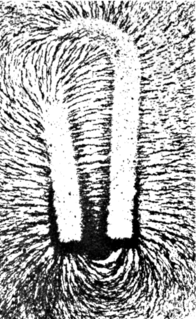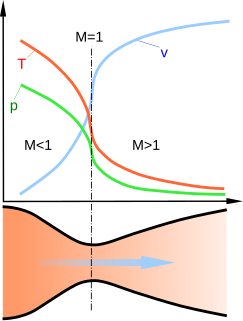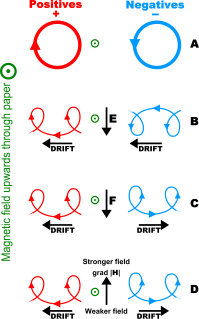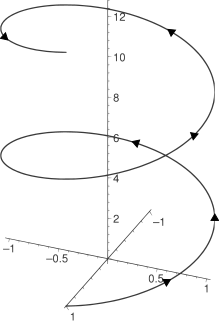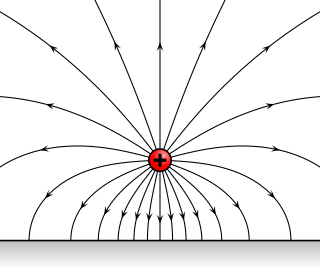
Spacecraft propulsion is any method used to accelerate spacecraft and artificial satellites. Space propulsion or in-space propulsion exclusively deals with propulsion systems used in the vacuum of space and should not be confused with launch vehicles. Several methods, both pragmatic and hypothetical, have been developed each having its own drawbacks and advantages.

In spacecraft propulsion, a Hall-effect thruster (HET) is a type of ion thruster in which the propellant is accelerated by an electric field. Hall-effect thrusters trap electrons in a magnetic field and then use the electrons to ionize propellant, efficiently accelerate the ions to produce thrust, and neutralize the ions in the plume. Hall-effect thrusters are sometimes referred to as Hall thrusters or Hall-current thrusters. Hall thrusters are often regarded as a moderate specific impulse space propulsion technology. The Hall-effect thruster has benefited from considerable theoretical and experimental research since the 1960s.

An ion thruster or ion drive is a form of electric propulsion used for spacecraft propulsion. It creates thrust by accelerating cations by utilizing electricity. The term refers strictly to gridded electrostatic ion thrusters, and is often incorrectly loosely applied to all electric propulsion systems including electromagnetic plasma thrusters.

A magnetoplasmadynamic (MPD) thruster (MPDT) is a form of electrically powered spacecraft propulsion which uses the Lorentz force to generate thrust. It is sometimes referred to as Lorentz Force Accelerator (LFA) or MPD arcjet.
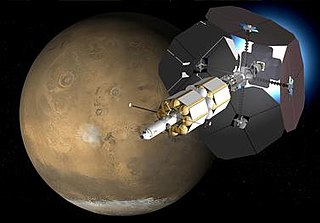
The Variable Specific Impulse Magnetoplasma Rocket (VASIMR) is an electrothermal thruster under development for possible use in spacecraft propulsion. It uses radio waves to ionize and heat a propellant. Then a magnetic field accelerates the resulting plasma to generate thrust. It is one of several types of spacecraft electric propulsion systems.

A nozzle is a device designed to control the direction or characteristics of a fluid flow as it exits an enclosed chamber or pipe.
Electron cyclotron resonance is a phenomenon observed in plasma physics, condensed matter physics, and accelerator physics. An electron in a static and uniform magnetic field will move in a circle due to the Lorentz force. The circular motion may be superimposed with a uniform axial motion, resulting in a helix, or with a uniform motion perpendicular to the field resulting in a cycloid. The angular frequency of this cyclotron motion for a given magnetic field strength B is given by
Ambipolar diffusion is diffusion of positive and negative species with opposite electrical charge due to their interaction via an electric field. In the case of ionic crystals, the fluxes of the diffusing species are coupled, while in a plasma the various species diffuse at the same rate.
In plasma physics, waves in plasmas are an interconnected set of particles and fields which propagate in a periodically repeating fashion. A plasma is a quasineutral, electrically conductive fluid. In the simplest case, it is composed of electrons and a single species of positive ions, but it may also contain multiple ion species including negative ions as well as neutral particles. Due to its electrical conductivity, a plasma couples to electric and magnetic fields. This complex of particles and fields supports a wide variety of wave phenomena.
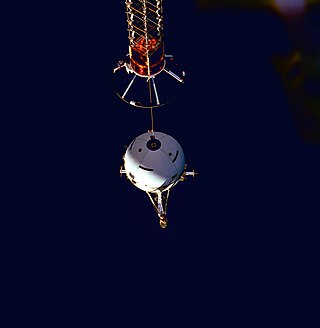
Electrodynamic tethers (EDTs) are long conducting wires, such as one deployed from a tether satellite, which can operate on electromagnetic principles as generators, by converting their kinetic energy to electrical energy, or as motors, converting electrical energy to kinetic energy. Electric potential is generated across a conductive tether by its motion through a planet's magnetic field.

High Power Electric Propulsion (HiPEP) is a variation of ion thruster for use in nuclear electric propulsion applications. It was ground-tested in 2003 by NASA and was intended for use on the Jupiter Icy Moons Orbiter, which was canceled in 2005.
The helicon double-layer thruster is a prototype spacecraft propulsion engine. It was created by Australian scientist Dr Christine Charles, based on a technology invented by Professor Rod Boswell, both of the Australian National University.
The electrodeless plasma thruster is a spacecraft propulsion engine commercialized under the acronym "E-IMPAcT" for "Electrodeless-Ionization Magnetized Ponderomotive Acceleration Thruster". It was created by Mr. Gregory Emsellem based on technology developed by French Atomic Energy Commission scientist Dr Richard Geller and Dr. Terenzio Consoli, for high speed plasma beam production.

A plasma propulsion engine is a type of electric propulsion that generates thrust from a quasi-neutral plasma. This is in contrast to ion thruster engines, which generate thrust through extracting an ion current from plasma source, which is then accelerated to high velocities using grids/anodes. These exist in many forms. Plasma thrusters do not typically use high voltage grids or anodes/ cathodes to accelerate the charged particles in the plasma, but rather uses currents and potentials which are generated internally in the plasma to accelerate the plasma ions. While this results in a lower exhaust velocities by virtue of the lack of high accelerating voltages, this type of thruster has a number of advantages. The lack of high voltage grids of anodes removes a possible limiting element as a result of grid ion erosion. The plasma exhaust is 'quasi-neutral', which means that ion and electrons exist in equal number, which allows simply ion-electron recombination in the exhaust to neutralise the exhaust plume, removing the need for an electron gun. This type of thruster often generates the source plasma using radio frequency or microwave energy, using an external antenna. This fact, combined with the absence of hollow cathodes allows the intriguing possibility of being able to use this type of thruster on a huge range of propellants, from argon, to carbon dioxide, air mixtures to astronaut urine.

An electrically-powered spacecraft propulsion system uses electrical energy to change the velocity of a spacecraft. Most of these kinds of spacecraft propulsion systems work by electrically expelling propellant at high speed, but electrodynamic tethers work by interacting with a planet's magnetic field.
The magnetic field oscillating amplified thruster is a versatile electrothermodynamic system, which is able to accelerate nearly every medium to extremely high velocities, thereby generating a high energetic plasma jet in the exhaust.
A reaction engine is an engine or motor that produces thrust by expelling reaction mass, in accordance with Newton's third law of motion. This law of motion is most commonly paraphrased as: "For every action force there is an equal, but opposite, reaction force."
An ionization instability is any one of a category of plasma instabilities which is mediated by electron-impact ionization. In the most general sense, an ionization instability occurs from a feedback effect, when electrons produced by ionization go on to produce still more electrons through ionization in a self-reinforcing way.

The Princeton Field-Reversed Configuration reactor (PFRC) is a plasma physics experiment at the Princeton Plasma Physics Laboratory (PPPL). The experiment probes the dynamics of long-pulse, collisionless, low s-parameter field-reversed configurations formed with odd-parity rotating magnetic fields. It aims to experimentally verify the physics predictions that such configurations are globally stable and have transport levels comparable with classical magnetic diffusion. It also aims to apply this technology to the Direct Fusion Drive concept for spacecraft propulsion.
